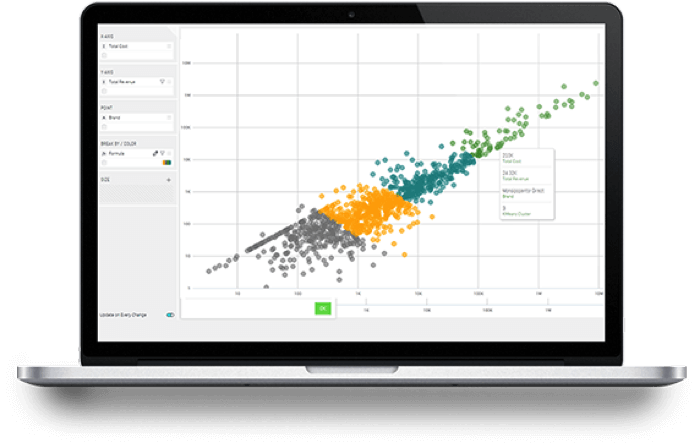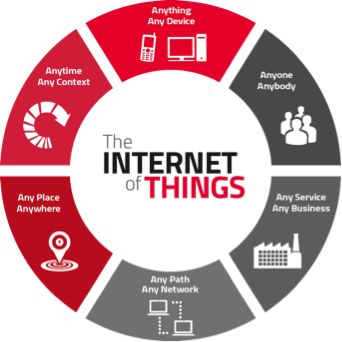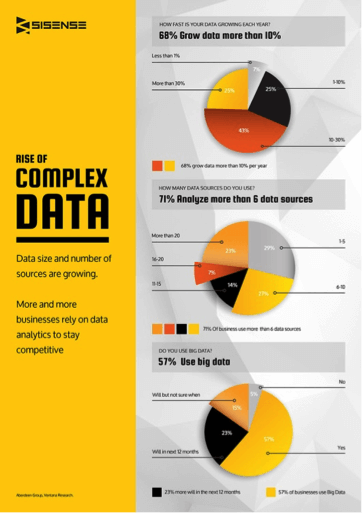This sponsored post is produced by Sisense.
Data discoveries are changing the conversation — in the boardrooms of every organization and in the media. Whether you are using data to find new planets or to better understand user behavior, data is the foundation of every new insight.
Today, more people see data as an important tool to create value and drive better decision-making, which is why in 2015 more organizations opened up data to employees than ever before. Though the obvious need to create value from data is driving massive BI adoption, companies today can’t afford to enter into the data world unprepared to embrace the new data challenges businesses will face in 2016.
Why 2016 is the year of Business Intelligence
So what data challenges does 2016 hold for your business? Taking the plunge into the sea of big, complex data with the right BI tool to keep a competitive edge is not as difficult as it used to be. There are some BI solutions that have made data analytics easier, faster, and more agile than ever before with new, powerful BI technologies compensating for scarcity in data science skills and IT resources.
Rita Sallam, Research VP at Gartner, describes 2016 as the culmination of business-friendly Business Intelligence, saying: “The BI&A market is in the final stages of a multiyear shift from IT-led, system-of-record reporting to pervasive, business-led, self-service analytics.”
BI has never been more geared towards business users as it is today. The data analytics market now offers fast-moving BI technology and new techniques to analyze data, aiming to simplify data and place it in the hands of business users — not just the IT team. In fact, a few innovative BI companies have created unique data analytics technologies that shatter the infamous 80/20 rule of data in the enterprise — the 20 percent that can be used and the 80 percent that is too complex. While that solves one decade-long challenge, it does create a series of new challenges as business users are thrust into the world of data. Here are the top three data challenges of 2016:
1. Democratization of predictive analytics
While no one can analyze data from the future to inform a smart business strategy, there is a way to predict the future using historical data — and that’s what we call predictive analytics. It’s a hot trend simply because the possibilities are a dream to any business. From determining how much a customer will buy from you over time, to forecasting which ad in which location will resonate the best with an audience, the most valuable insights often point at a future repercussion.
And business users are aching to get their hands on predictive analytics, causing a revolution amongst business users as they rebel against the need to rely on data scientists or super specialized software in order to use predictive analytics. Business users are fighting for independence to access data and make use of it without multiple IT iterations or a long wait, including the ability to perform advanced analytics and predictive analytics.
Afterall, it is usually business questions that these teams are trying to answer. If business users were able to be more hands-on and interactive with the data, it would help them reach results in an actionable timeframe. In fact, Aberdeen Group reports that users of interactive data visualization tools obtain information within the decision window 17 percent more often than all other BI users.
Because business users demand greater access to predictive analytics, we are seeing predictive analytics being built into self-service analytic tools, and BI solutions aiming to empower non-analysts seeking more value to data. Businesses must choose a BI tool that has the agility and the self-service predictive analytics qualities to give business users that empowerment.
2. Internet of Things goes mainstream
Organizations that empower users with data from connected devices report 93 percent more users per capita who are satisfied with their access to the data they need to support decisions. In other words, collecting and analyzing data from Internet of Things (IoT) devices is gaining incredible traction and popularity.
More and more people are turning to data with both professional and personal questions, as the world creates benchmarks between people on people. Gartner predicts that, “the amount of devices connected to the Internet will rise from about 13 billion today to 50 billion by 2020,” leaving organizations with the need to makes sense of all this data.
3. Complex data, everywhere
Data complexity is on the rise, due to the size and number of data sources that are growing exponentially. Complex data is defined as data that is big, disparate or both, with 57 percent of organizations report having big data and a quarter of organizations expecting their data to grow by more than 30 percent, according to this Aberdeen Group and Ventana Research infographic on complex data.
As for the diversity of the data — a whopping 71 percent of organizations analyze more than six data sources, and an astonishing 23 percent use more than 20. With the influx of services, there’s a greater need to understand relationship and impact of sources and more emphasis is being placed on the ability to join and merge multiple data sources quickly and easily.
As complex data becomes ubiquitous, it poses new challenges to the world of data. Thanks to the technological advancements in data collection, as well as storage and querying technologies in the recent years, organizations using business analytics tools that know how to handle complex data can take on this challenge and see incredible results.
Rising to the challenge: How to embrace BI trends
Want to hear more about how you can embrace these challenges and even cause them to positively impact your business in 2016?
Join three top BI leaders: Amir Orad, CEO of Sisense, Martin Butler, Founder of Butler Analytics, and James Levine, Sr. Manager, Business Strategy at Act-On Software, as they discuss how to embrace BI trends that will move, shake, and shape your world this year.
Register for the Live Roundtable: BI Trends in 2016 and learn how to take on the BI trends you’ll likely face in the upcoming year.
Elana Roth is Tech Writer at Sisense.
Sponsored posts are content that has been produced by a company that is either paying for the post or has a business relationship with VentureBeat, and they’re always clearly marked. The content of news stories produced by our editorial team is never influenced by advertisers or sponsors in any way. For more information, contact sales@venturebeat.com.


